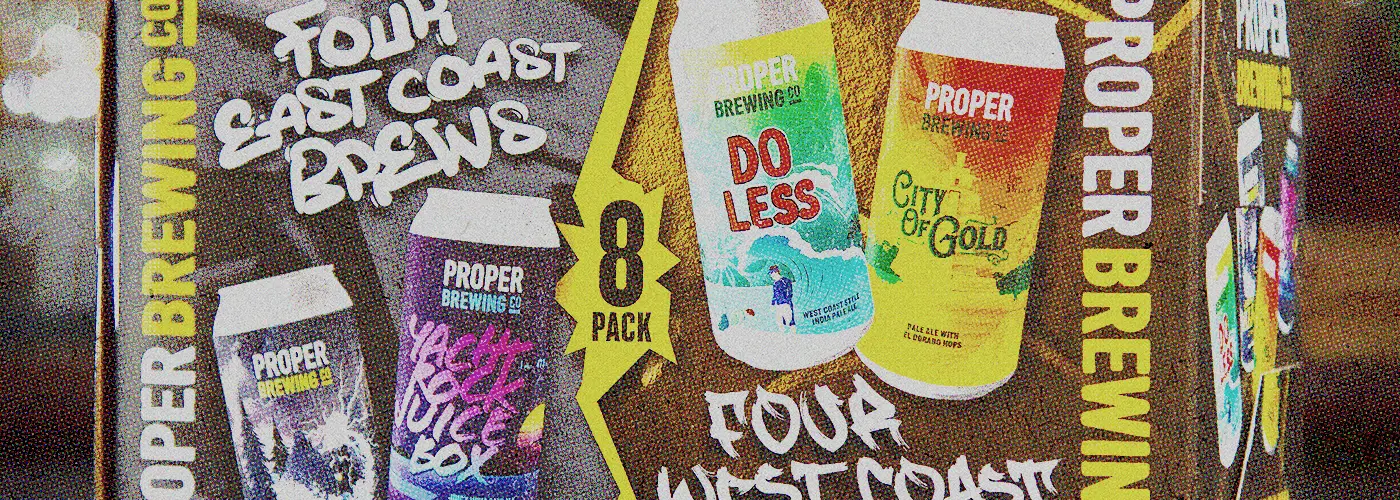In the dynamic world of consumerism, packaging design has emerged as a potent tool that can make or break a brand’s success. Beyond its primary function of protecting the product during transit and storage, packaging has transformed into a powerful medium for brand communication. Companies have realized that the visual appeal of their packaging can significantly influence consumer behavior and shape brand perception. In this blog, we will explore how packaging design impacts brand perception, the psychology behind it, and how businesses can harness this aspect to gain a competitive edge in the market.
We’ve been fortunate to work with great companies on packaging projects, like Proper Brewing and Kiitos Brewing. From that we’ve learned a few lessons:
-
The Power of First Impressions
As the saying goes, “You never get a second chance to make a first impression.” This rings true for products as well. Packaging design serves as the first point of contact between a brand and its potential customers. A visually appealing and well-crafted package instantly captures the attention of consumers, evoking curiosity and interest in the product. On the other hand, poorly designed or generic packaging may fail to stand out from the competition and may even lead consumers to perceive the product as lacking in quality.
-
Communicating Brand Values and Personality
Packaging design is more than just an aesthetic choice; it is a reflection of a brand’s values, personality, and identity. Companies use various visual elements, colors, and typography to convey the brand’s story and essence. For instance, an eco-friendly brand might opt for sustainable materials and earthy colors, while a luxury brand may use elegant, minimalist designs with premium finishes. When done effectively, packaging creates an emotional connection with consumers, aligning their values with those of the brand.
-
Differentiation in a Saturated Market
In today’s hyper-competitive markets, product differentiation is crucial for survival. A standout packaging design can provide the much-needed edge to a brand, helping it distinguish itself from the crowd. Unique and innovative packaging not only attracts attention but also piques consumers’ curiosity, leading to increased engagement and potential sales. Brands that invest in creative and distinctive packaging have a better chance of carving a niche for themselves and remaining memorable in the minds of consumers.
-
The Psychology of Packaging Design
Packaging design’s influence on brand perception is deeply rooted in consumer psychology. Colors, shapes, and even the materials used in packaging can trigger specific emotions and associations in the minds of consumers. For instance, warm colors like red and orange may evoke feelings of excitement and energy, while cool colors like blue and green can create a sense of calm and trust. Understanding these psychological nuances allows brands to design packaging that resonates with their target audience on a subconscious level.
-
Building Brand Loyalty and Trust
Consistency in packaging design is vital for building brand loyalty and trust. Familiarity with a brand’s packaging creates a sense of reliability and comfort for consumers. They associate the packaging with positive experiences they had with the brand in the past, leading to repeat purchases and brand loyalty. In contrast, frequent changes in packaging design may confuse consumers and erode trust, as they may perceive such changes as signs of inconsistency or lack of authenticity.
-
Eco-Friendly Packaging and Sustainable Branding
In recent years, eco-consciousness has become a prominent consideration for consumers. They are increasingly drawn to brands that demonstrate a commitment to sustainability and environmental responsibility. Packaging design plays a pivotal role in communicating a brand’s eco-friendly initiatives. Using eco-friendly materials, reducing excess packaging, and promoting recycling all contribute to a brand’s sustainable image, which resonates positively with environmentally-aware consumers.
-
Influence on Purchase Decisions
Packaging design has a direct impact on consumer purchase decisions. Eye-catching and well-designed packaging can stimulate impulse purchases, even when consumers may not have initially planned to buy the product. Additionally, the packaging design can enhance the perceived value of the product. Consumers are often willing to pay more for products that come in elegant and premium packaging, as they associate it with higher quality.
In conclusion, packaging design plays a pivotal role in shaping brand perception and influencing consumer behavior. Brands must recognize the significance of packaging as a communication tool that goes beyond practicality. A carefully crafted packaging design can convey brand values, differentiate products in a crowded market, and foster brand loyalty. By understanding the psychology of packaging and the impact it has on consumers, businesses can create packaging that resonates with their target audience and strengthens their position in the market.
As the world becomes more conscious of sustainability, eco-friendly packaging is gaining traction, presenting an opportunity for brands to establish themselves as environmentally responsible and gain the favor of conscious consumers. Ultimately, investing in effective packaging design can yield substantial returns by increasing brand visibility, driving sales, and building long-lasting relationships with consumers.
